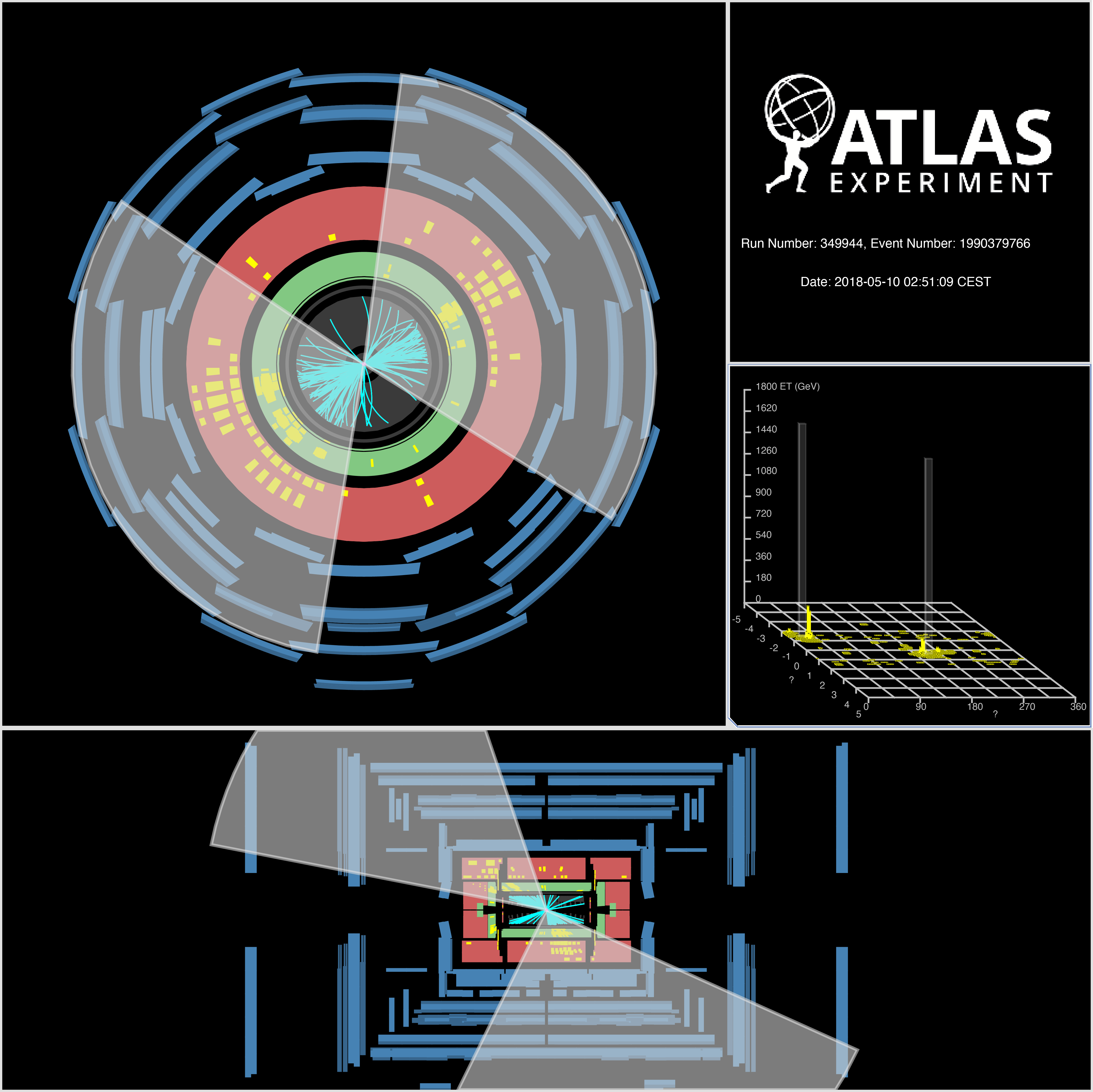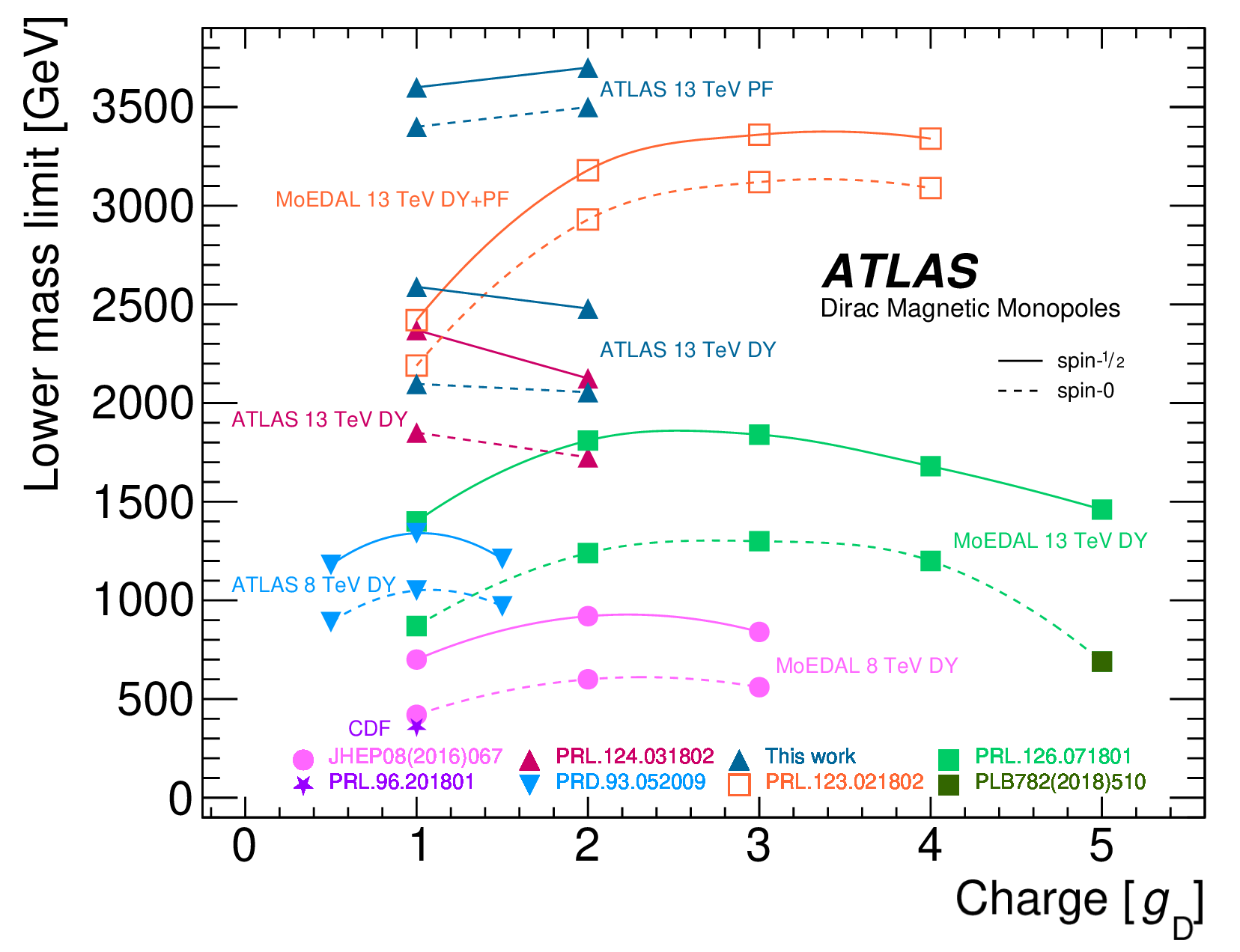ATLAS measures ZZ production using Run-3 data and a new slim data format
25 August 2023 | By
The ATLAS Collaboration has just released a new measurement of the production cross section of two Z bosons. This highlight result examines data collected during Run 3 of the LHC – with protons colliding at a record energy of 13.6 TeV – and pioneers the use of PHYSLITE – a new, reduced data format that requires significantly less storage.
For their new study, ATLAS researchers focused on the production of two Z bosons (ZZ) decaying into four leptons (electrons or muons). Their measurements not only test the electroweak sector of the Standard Model at the highest available energies in a model-independent way, but also provide an opportunity to further verify the functionality of the ATLAS detector and its reconstruction software, which have undergone many improvements for the new LHC Run 3 operation period.
This is the first result to use the PHYSLITE data format and the new analysis model implemented by the ATLAS Collaboration for Run 3 and beyond. This new analysis model does away with the huge number of custom data formats that used to be tailored to specific physics cases. Instead, these have been replaced by two new, common formats: PHYS and PHYSLITE. This consolidation of formats significantly reduces the computing resources needed for ATLAS analyses.
The new data formats – PHYSLITE and PHYS – significantly reduce the computing resources needed for ATLAS analyses.
PHYS is the main format being used in Run 3, serving about 80% of all physics analyses. PHYSLITE is a reduced format, storing only the most common physics objects that are also already calibrated and preselected. PHYSLITE is about a factor three smaller than PHYS, and it is also faster to process – making it an attractive format for standard physics analyses. PHYSLITE will become ATLAS’ main data format for High-Luminosity LHC (Run 4), as computing resources will be further limited due to the vast amount of data expected. The use of PHYSLITE in Run 3 analyses provides valuable input for its future deployment. For the case of this ZZ measurement, PHYSLITE data samples were about a factor 3 smaller compared to the Run 2 samples, which contributed significantly to the fast turnaround of this result.
In their study of the ZZ process, researchers measured the production cross section within a specific phase space of the ATLAS detector (the “fiducial” cross section) to be 36.7 ± 2.3 fb. Assuming Standard Model decay rates, the fiducial cross section was extrapolated to obtain the total cross section of 16.9 ± 1.1 pb. The results are well described by Standard-Model predictions (see Figure 1). Researchers also measured the differential cross section of the invariant mass and the transverse momentum of the four-lepton system (see Figure 2). All of these measurements enabled physicists to compare their experimental results with theoretical predictions in a model-independent way.
This new analysis showcases the readiness and usability of the new PHYSLITE format for Run 3 analyses – paving the way forward to the future LHC runs. It also marks the first step in an ongoing quest to measure diboson productions at the new 13.6 TeV centre-of-mass energy; more analyses using Run-3 data will follow.
Learn more
- Measurement of ZZ production cross-sections in the four-lepton final state in proton-proton collisions at 13.6 TeV with the ATLAS experiment (ATLAS-CONF-2023-062)
- EPS-HEP 2023 Parallel talk by Xuan Yang: Diboson production cross section and polarisation measurements by ATLAS and CMS
- CHEP 2023 Parallel talk by Jana Schaarschmidt: PHYSLITE - A new reduced common data format for ATLAS







